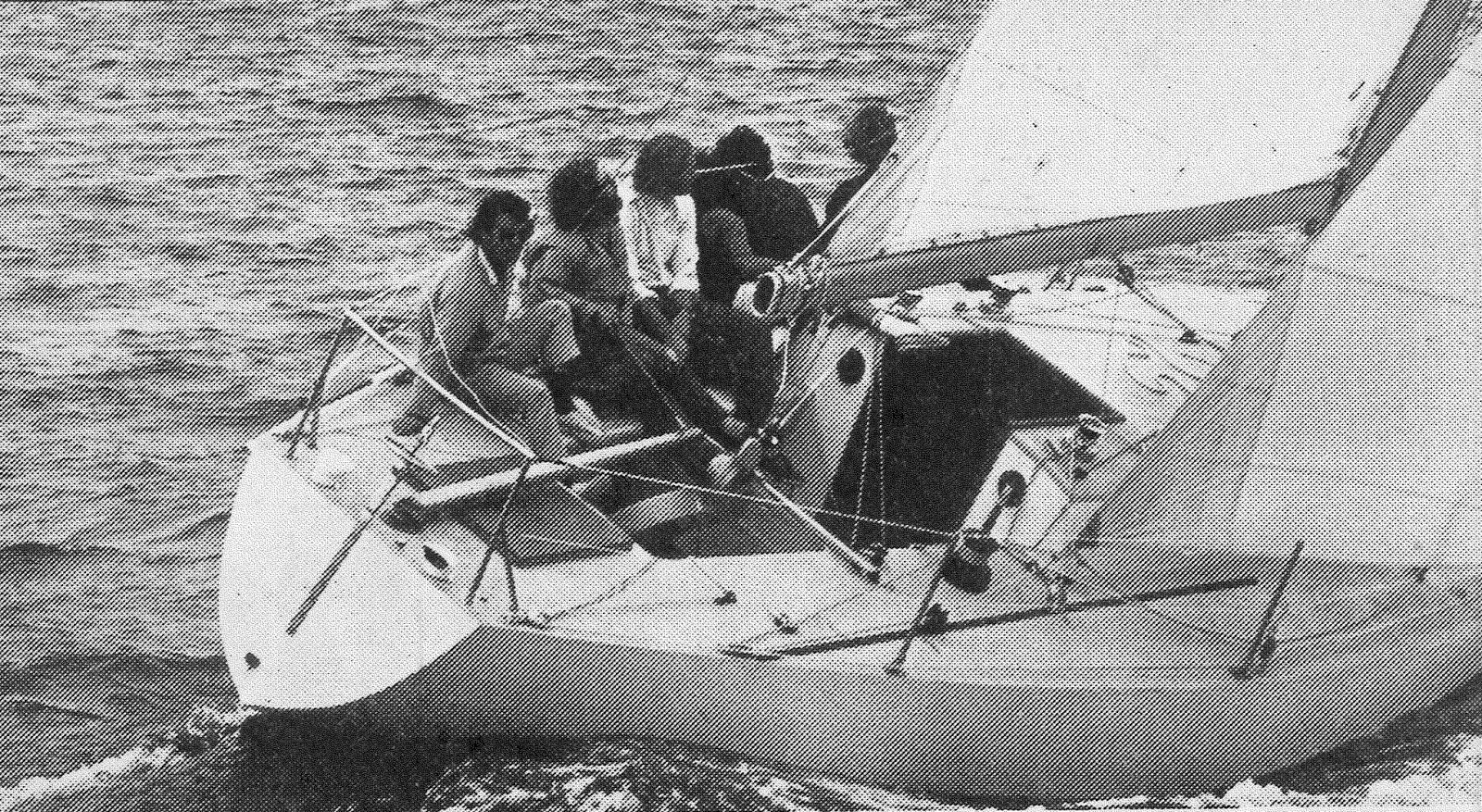 |
| Part of the One Ton Revisited fleet prepare for the start off the RNZYS, Westhaven |
The One Ton Revisited fleet struggled in light airs that fluctuated between southerly and westerly and frequently died. There was a light northerly tantalisingly close to windward along the northern shore of Waiheke but only Pacific Sundance managed to cross the divide into the slightly more consistent breeze. It still took her nearly 7½ hours to cover the distance and take the gun, 1 hour 20 minutes ahead of the Farr 1104 Revolution (Tony Wallis/Max Cossey). Third home was the recently restored S&S 36 Rainbow II (Chris Bouzaid), some three minutes astern of Revolution.
On IRC corrected time, Pacific Sundance (rating 1.045) won by some 26 minutes from Rainbow II (0.930). Third was the smallest boat in the fleet, Kevin Kelly's Lidgard design Impact (0.935) which, with Andy Ball on the helm, led on the water in the early stages.
 |
| Start of the first race of the One Ton Revisited - Pacific Sundance leads from Rainbow II, Result, Revolution and Wai Aniwa |
Chris Bouzaid (Rainbow II): “We changed spinnakers 47 times as we kept running out of the breeze and had to wait for it to fill in again. We didn’t get anything remotely consistent until after Gannet Rock when we nosed into the Firth of Thames and the light northerly”.
Roger Foley (Wai Aniwa): We had a bad start but led through middle section only to lose out to Rainbow II and Result after Gannet Rock. Rainbow II has a great set of sails, well suited to Auckland conditions. The boat is also slippery and well sailed. It’s going to be fun”.
Race 2 in the five-heat series is a 20-mile Olympic course scheduled to start at 11am on Monday 2 March.
Article provided by Alan Sefton











































